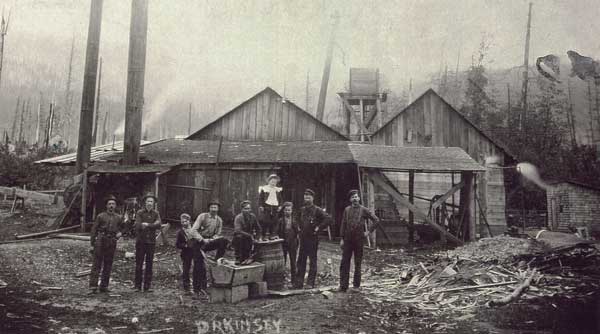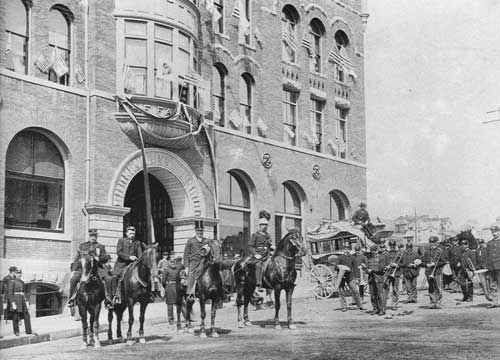
Mabel Life & Times |
|
"There are a number of large lumber and shingle mills in and near the city, [Sedro-Woolley] among them being the Heininger's with a capacity of 150,000 shingles per day; Burn's Shingle Company's, 90,000 per day; Green Shingle Company's two mills, 300,000; Clark & Lennon's, 150,000; D.J. Cain & Company's, 80,000; J.M. Hoyt's, 80,000; Sterling Mill Company's, 150,000; Sedro Shingle Company's, 100,000; Grand Rapids Shingle Company's, 150,000 , and the Childs Lumber Company's. There are also a number of logging camps in the vicinity of the town." 1906 Illustrated History Interstate Publishing Co. |


I remember in 1897 when we lived at Prairie, Joe Hoyt had a shingle mill there and I lived with my sister [Annie Boyd Hoyt] and brother-in-law, who worked for Joe at the time. I was a young child then but I can plainly remember our trip to Fairhaven. Some neighbors and my folks planned to go to Fairhaven and spend the Fourth of July. What a wonderful day that was then. The joy it brought to us children! The thought is simply thrilling yet.To be continued...
We made our preparations two days ahead of time and were ready for an early start on July 3, for it was considered a long trip with a team and wagon. The wagon was brought close to the house to be handy and that afternoon some other children and myself were playing in it. Of course, I had to get up in the spring seat and jump up and down. As it had been raining, the seat was slippery and all at once my feet flew out and down I went, head first, hitting the bridge of my nose on the dashboard. Considerable wailing and much bloodshed ensured for I received quite a gash, but worst of all, the children told me they bet I wouldn't be able to go. However, I said I was all right and next morning we were all ready bright and early for our big trip. Bird and Nell were hitched to the wagon and we piled in. Some sat on the spring seat, some sat on a seat made by putting a 12-inch board across the wagon bed. We surely had fun and not a thing along the road escaped our eyes.
The road was extremely rough and muddy and the heavy wagon jolted from one side to the other. It rained quite a bit, too, but the older folks had umbrellas, and we children didn't mind a bit, eve though we did get most of the drip from their umbrellas. At last we arrived at Fairhaven and I didn't think a town could be so big. Mount Vernon being the largest I'd ever seen at that time. It rained the morning of the 4th, but after a while it cleared up and we went to the place where they were celebrating. If I live forever, I shall never see anything quite so wonderful as that celebration.
There was a big Ferris wheel all decorated with flags and bunting and people going around and around in the air; a merry-go-round with beautiful horses, with bright eyes and flowing manes. We had candy, paper fans that folded and all sorts of treats. There was a man with a music box that stood on legs. He called it a tubaphone. It was similar to an old Edison phonograph but instead of a horn it had a hollow rubber tube that branched off like the handle of a sling shot, and the large part was fastened on the reproducer. The branched part, with little buttons at the end, he put in his ears. Then he would start it going and it sounded through the tube like phonograph without a horn, no volume at all. Everyone thought that was a wonderful invention and wondered what they'd get up next. He charged ten cents for each person and he played two songs. I remember one song he played was "My Boyhood Happy Days Down On the Farm."
Well, we had better weather on the way home and I think both old and young enjoyed that Fourth. I know I did, even though I had to go with a court plaster on my nose and still carry the scar from that fall in the wagon.
"Mabel Boyd is one of the most important historians who has ever lived on the Skagit river. She was born on the south side of the Skagit river at Birdsview, the twelfth child of Lewis A. and Olive Clarissa (Torrey) Boyd. The family had originally arrived here in October 1882 when there were just nine children. Although she had only a rudimentary education, Mabel has left her family six volumes of diaries and notes. In the late 1930s and '40s, Mabel was a correspondent for the Sedro-Woolley Courier-Times".
Noel V. Bourasaw Skagit River Journal